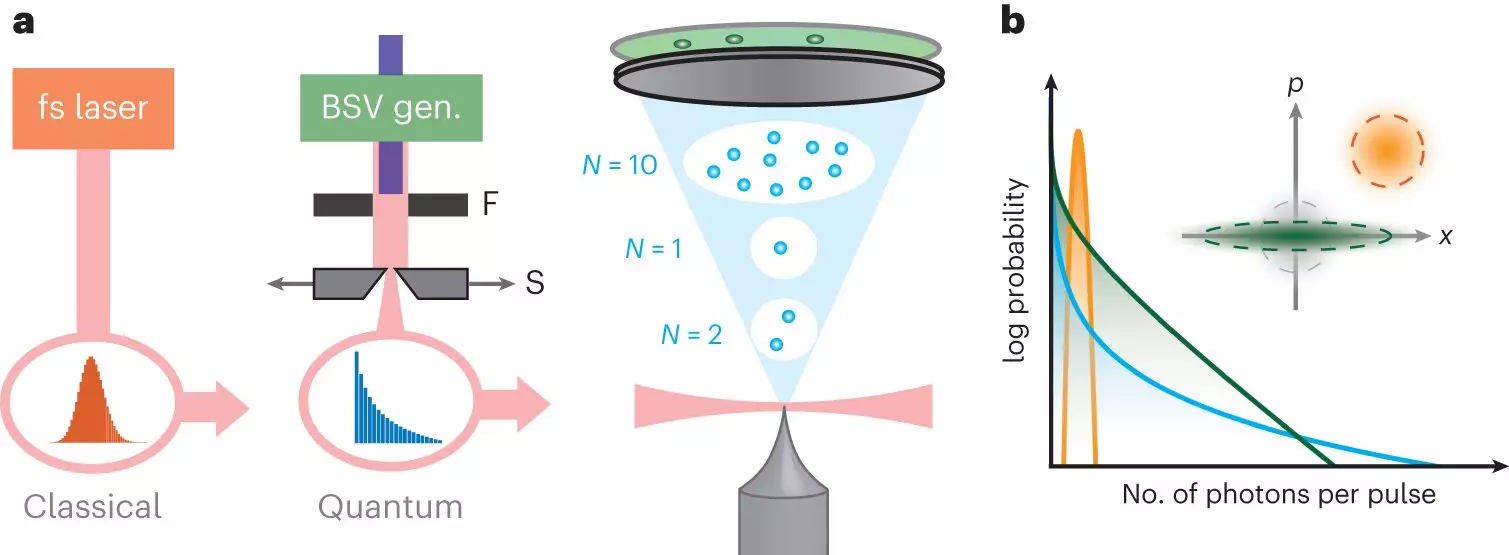Strong field quantum optics is a fascinating field that combines elements of strong field physics with the principles of quantum optics. While the distribution of photons in classical and non-classical light sources is well-documented, the impact of these distributions on photoemission processes is not fully understood. Recent research conducted by researchers at Friedrich-Alexander-Universität Erlangen-Nürnberg and the Max Planck Institute for the Science of Light aims to shed light on this intersection by exploring the interactions between quantum light sources and matter.
The primary objective of this research was to understand how quantum light originating from non-classical light sources interacts with matter. Typically, interactions between quantum light and matter have been explored using classical light sources. However, the researchers sought to investigate this phenomenon using a non-classical light source, specifically bright squeezed vacuum. This form of non-classical light has unique statistical properties that differentiate it from traditional light sources.
The experiments conducted by the researchers involved using non-classical light sources to trigger a photoemission process from metal needle tips. These metal needle tips, just a few tens of nanometers in size, were subjected to extreme intensities and fluctuations within each laser pulse. By counting the number of electrons emitted for both classical and non-classical light sources, the researchers were able to directly observe the influence of the driving light on electron emission.
The findings of this research have significant implications, particularly for imaging applications with electrons. By modulating the number of electrons emitted, it may be possible to reduce the risk of damage to biological molecules, which are known to be highly sensitive to electron doses. This could open up new possibilities for high-resolution imaging techniques that minimize the potential for damage to delicate biological samples.
Moving forward, the researchers aim to explore the possibility of imprinting different photon distributions onto electrons, such as those with reduced noise. While this presents a significant challenge, it could pave the way for new developments in the field of strong field quantum optics. These findings have the potential to shape the future of quantum light sources and their applications in various fields, including sensing and strong-field optics.
The research conducted by Heimerl, Hommelhoff, and their collaborators represents a significant step forward in our understanding of the interactions between quantum light sources and matter. By leveraging non-classical light sources, the researchers have demonstrated the potential for modulating electron emission and opening up new avenues for research in strong field quantum optics. This work lays the foundation for future exploration in this exciting and rapidly evolving field.


Leave a Reply